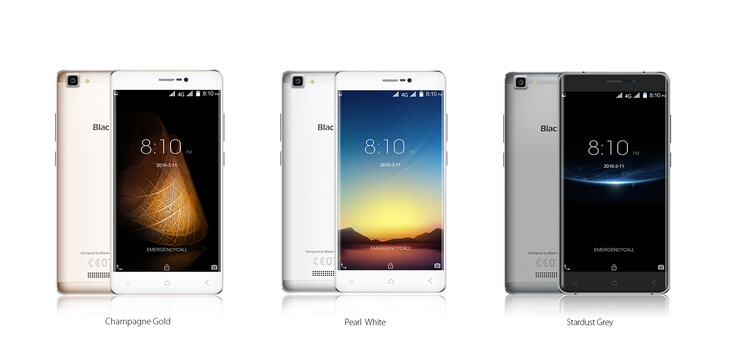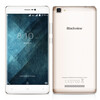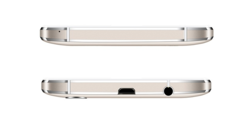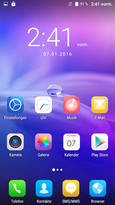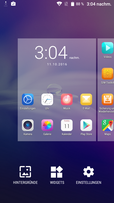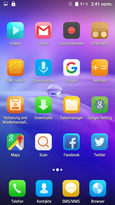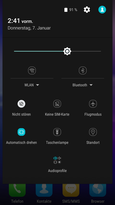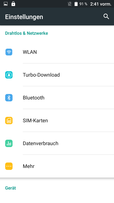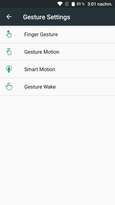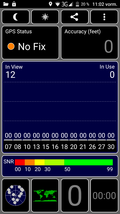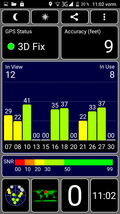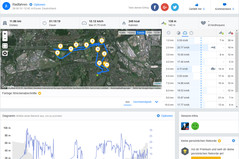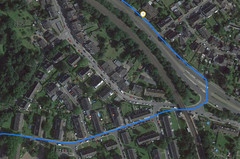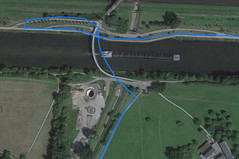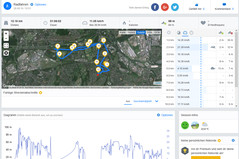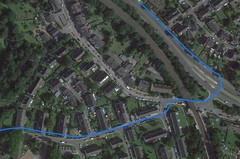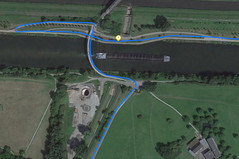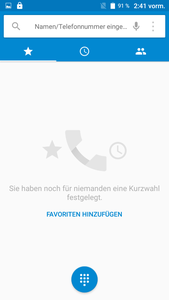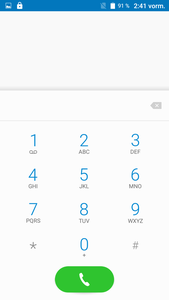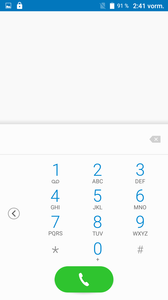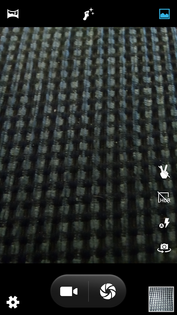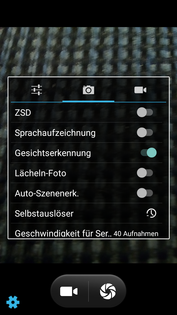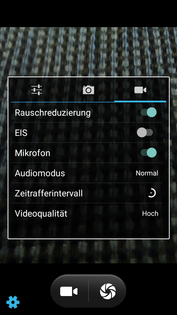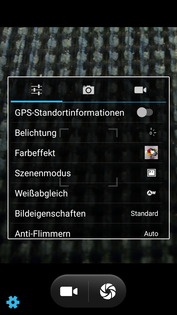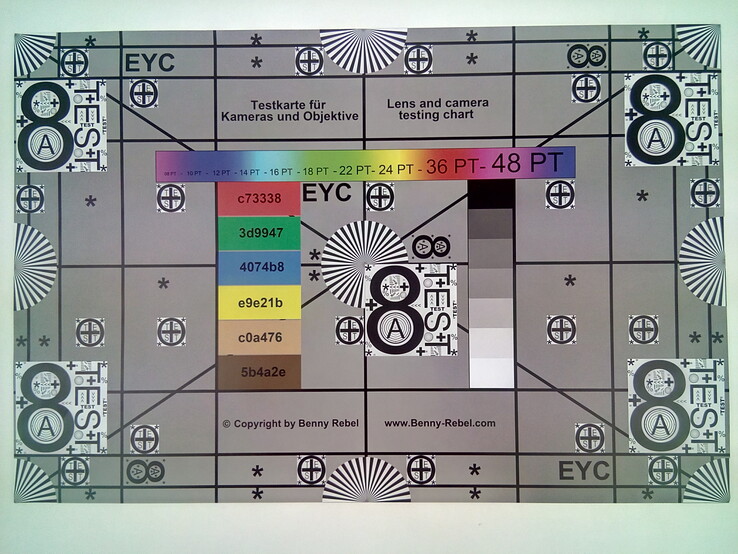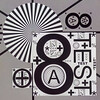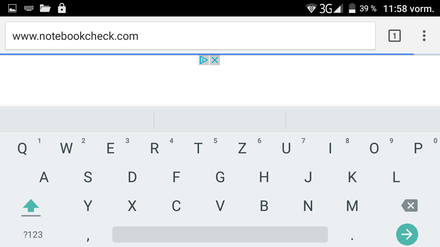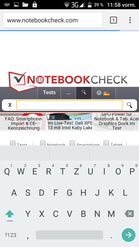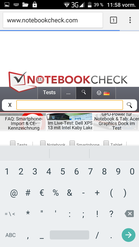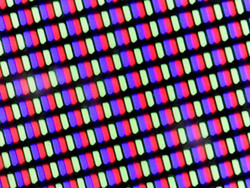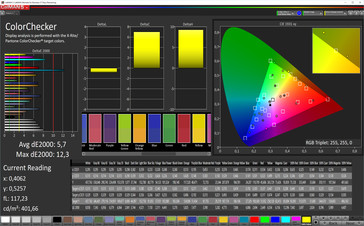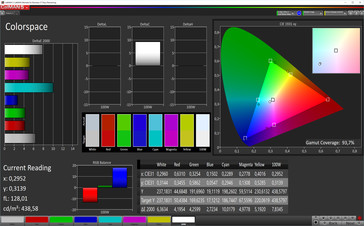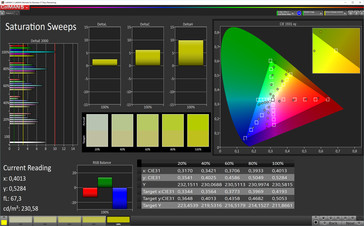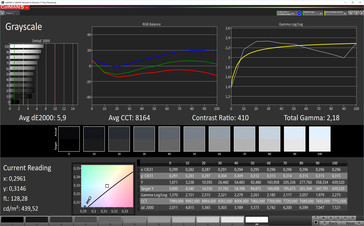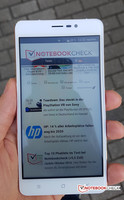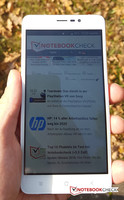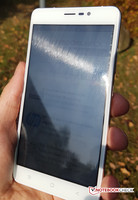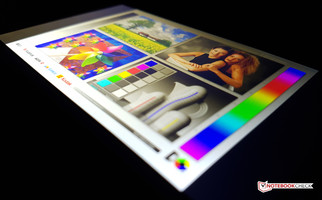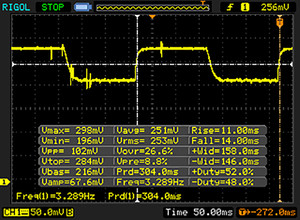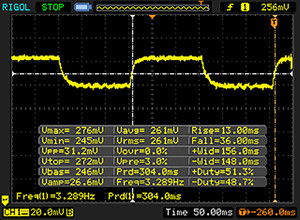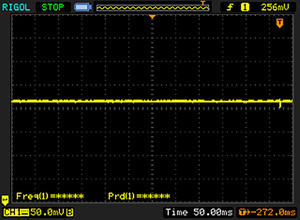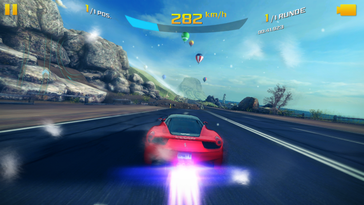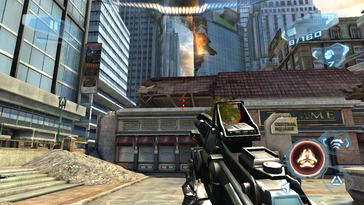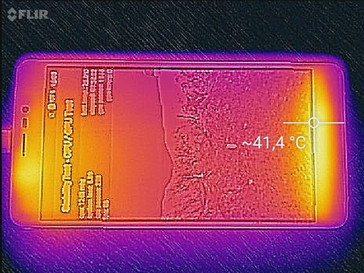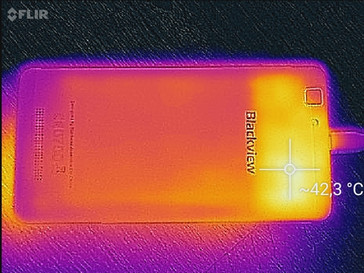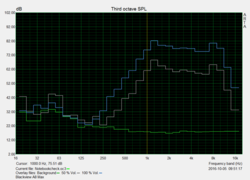Blackview A8 Max Smartphone Review
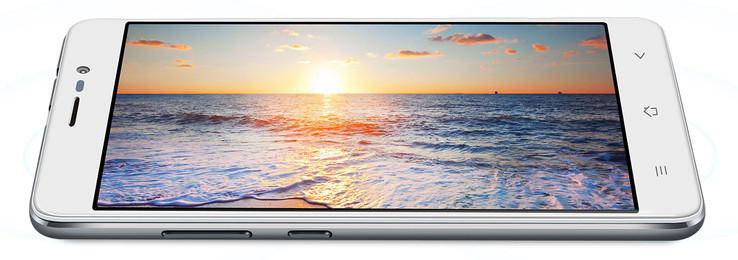
For the original German review, see here.
The Blackview A8 Max is Blackview's newest A-series member. The smartphone features a 5.5-inch LCD IPS panel with HD resolution (1280 x 720 pixels) and comes with 16 GB of flash storage, which is expandable with a MicroSD card (maximum 64 GB). Even when a MicroSD card is used to supplement the integrated storage, the A8 Max still supports dual-SIM functionality. The device is powered by a Mediatek quad-core processor and comes equipped with 2 GB of RAM.
Competitors in this class are the Oukitel U7 Plus, the Archos 50 Platinum 4GTest Archos 50 Platinum 4G Smartphone, the TP-Link Neffos C5, the Ulefone Metal as well as the Leagoo M5. The latter doesn't support LTE, however. Blackview's own flagship product - the at least visually very similar R7 - is also a possible alternative, as it only sells for about 70 Euro (~$77) more. The reference smartphone for our review is the current Xiaomi Flagship Mi 5 (32 GB version: about 260 Euro / $285).
Case
The chassis is made from a mixture of metal and plastic. With dimensions of 154 x 78 mm and a display-to-surface ratio of 69.3 %, the entry-level smartphone isn't exactly compact by any means. The 2.5 D glass panel is slightly curved at the edges, which makes the smartphone look more upscale. Three color options are offered: gold ("Champagne Gold"), white ("Pearl White") and gray ("Stardust Grey"). The two former versions have a white, the gray version a black front bezel.
The smartphone is sturdy thanks to the solid (milled) metal frame with polished edges. The removable back cover is slightly curved, grooved and segmented at the upper and lower edges similar to the sibling R7. Haptics are good - especially considering the price. The physical buttons for the volume control and the on/off switch are very good quality as well.
The build quality is decent, alhough the back plate flexes somewhat when pressure is applied and both the headphone jack and the Micro-USB port are not integrated cleanly into the metal frame.
Connectivity
The A8 Max comes with 16 GB of flash storage of which 11.1 GB are available to the user. A MicroSD card of up to 64 GB can be used to expand the storage; moving applications (A2SD) to the card is supported as well. In addition, the Blackview A8 Max comes with an FM radio, so the user can listen to music even when not connected to the Internet.
The top edge is home to a 2.0 Micro-USB port. The smartphone does not recognize external peripherals (via USB OTG) like USB sticks or keyboards.
Software
Even though the smartphone is very inexpensive, it comes equipped with current version of Android (6.0 Marshmallow) and features security patches from August 2016. Compared to a plain-vanilla install, both user interface as well as the notification area have undergone some visual tweaks. The Blackview UI does not contain an app drawer, so all apps are distributed on the home screen after installation.
The user can start applications or unlock the smartphone using gesture control even when the display is turned off. Accessing the home screen directly, for example, requires drawing the letter "I" onto the display.
Even though we selected German as the system language, some menu entries remained in English.
Communication and GPS
Wireless connectivity is provided by Bluetooth version 4.1 and WLAN 802.11 b/g/n. The reception quality is sufficient and the attenuation is - 46 dB right next to the router (Telekom Speedport, W921V). The average transfer rates between the smartphone and our reference router (Linksys EA8500) at a distance of 1 m top out at 48 Mbit/s (sending) and 34 Mbit/s (receiving) and are thus comparable to other entry-level smartphones. The WLAN connection dropped every so often during the review period, which was somewhat annoying.
The dual-SIM smartphone is equipped with two MicroSIM card slots, both of which support LTE. The smartphone supports quad-band GSM, dual-band UMTS as well as LTE (Cat 4) and the frequencies of 800, 1800, and 2600 MHz (the required frequency bands in Germany). Both the connection as well as the reception quality within our metropolitan area were quite decent.
| Networking | |
| iperf3 transmit AX12 | |
| Blackview A8 Max | |
| iperf3 receive AX12 | |
| Blackview A8 Max | |
| iperf Server (receive) TCP 1 m | |
| Xiaomi Mi 5 | |
| Blackview R7 | |
| Ulefone Metal | |
| Archos 50 Platinum 4G | |
| Oukitel U7 Plus | |
| Leagoo M5 | |
| TP-Link Neffos C5 | |
| iperf Client (transmit) TCP 1 m | |
| Xiaomi Mi 5 | |
| Blackview R7 | |
| Ulefone Metal | |
| Oukitel U7 Plus | |
| Leagoo M5 | |
| TP-Link Neffos C5 | |
| Archos 50 Platinum 4G | |
The GPS module was able to establish our location quite quickly with an accuracy of 3 m. Indoors, a satellite lock was not possible. The overall accuracy of the GPS module is not that high, which resulted in a difference of 300 m compared to the professional Garmin Edge 500 (test route is 12.2 km long).
Telephone and Voice Quality
The reception as well as the talk quality are decent. The maximum volume level guarantees that voices are generally easy to understand. Noise interference was never an issue during our test calls when connected to the German D-Netz (Vodafone). The integrated microphone offers acceptable quality, but our conversation partner did mention that we were somewhat harder to understand.
Cameras
The main camera uses a 1/4-inch Sony Exmor IMX219 sensor with a resolution of 3280 x 2464 pixels. The software increases the native resolution of 8.08 MP to 13.3 MP (interpolation). The edge length of each individual pixel is 1.12 μm.
The quality of the rear-facing camera is decent for the price point, even though the resulting photos lack detail and are not that sharp even when plenty of light is available (scene 3: surroundings). Compared to other entry-level devices, the camera features a decent dynamic range, so objects in a scene containing lots of light and shadow don't get too dark (scene 2: river). The autofocus functioned well even during macro photography. Marginal ambient lighting results in lots of picture noise and low sharpness (scene 1: street). Photos taken at night are much brighter though than those taken with other budget offerings.
The 5 MP front-facing camera is suitable for social media snapshots ans selfies - but not much more. Similar to the main camera, the software interpolates the native resolution (to 8 MP). Video recording is only possible at 720p at 30 FPS no matter which camera is used.
Accessories and Warranty
The shipping box contains a modular power adapter with an output of 5 watts (1 ampere, 5 volts), a USB cable, an in-ear headphone and a screen protector for the display. The warranty is 12 months. Users who decide to order their smartphone directly from China via import companies might have harder time with their warranty and service.
Please see our Guarantees, Return Policies & Warranties FAQ too for country-specific information.
Input Devices and Operation
The Blackview A8 Max features three touch-sensitive buttons below the display which are not lighted. The capacitive multi-touch display (5 fingers) responds quickly and accurately. Inputs generally are executed without significant delays.
The smarpthone ships with the standard Android keyboard from Google.
Display
The IPS display measures 5.5 inches and features HD resolution (1280 x 720 pixels), which translates to a pixel density of 267 ppi. The resulting pictures are sufficiently sharp, although upon closer examination we were able to identify the individual pixels with the naked eye.
With a maximum display brightness of 436 cd/m2, the A8 Max ranks about midfield when compared to the other smartphones we've mentioned. At 439 cd/m2, the brightness when looking at an even distribution of light and dark screen content (APL-50) is at just about the same level. Considering the price, the display performance is more than acceptable.
| |||||||||||||||||||||||||
Brightness Distribution: 86 %
Center on Battery: 435 cd/m²
Contrast: 403:1 (Black: 1.08 cd/m²)
ΔE ColorChecker Calman: 5.7 | ∀{0.5-29.43 Ø4.78}
ΔE Greyscale Calman: 5.9 | ∀{0.09-98 Ø5}
Gamma: 2.18
CCT: 8164 K
| Blackview A8 Max IPS, 1280x720, 5.5" | Ulefone Metal IPS, 1280x720, 5" | Oukitel U7 Plus IPS, 1280x720, 5.5" | Leagoo M5 IPS, 1280x720, 5" | Archos 50 Platinum 4G IPS, 1280x720, 5" | TP-Link Neffos C5 IPS, 1280x720, 5" | Blackview R7 IPS, 1920x1080, 5.5" | Xiaomi Mi 5 IPS, 1920x1080, 5.2" | |
|---|---|---|---|---|---|---|---|---|
| Screen | -2% | 10% | -18% | 7% | 20% | -11% | 57% | |
| Brightness middle (cd/m²) | 435 | 312 -28% | 462 6% | 401 -8% | 344 -21% | 508 17% | 552 27% | 598 37% |
| Brightness (cd/m²) | 407 | 315 -23% | 437 7% | 387 -5% | 349 -14% | 491 21% | 526 29% | 566 39% |
| Brightness Distribution (%) | 86 | 87 1% | 91 6% | 92 7% | 89 3% | 89 3% | 91 6% | 90 5% |
| Black Level * (cd/m²) | 1.08 | 0.56 48% | 0.58 46% | 0.53 51% | 0.65 40% | 0.58 46% | 0.64 41% | 0.51 53% |
| Contrast (:1) | 403 | 557 38% | 797 98% | 757 88% | 529 31% | 876 117% | 863 114% | 1173 191% |
| Colorchecker dE 2000 * | 5.7 | 6.8 -19% | 7.5 -32% | 9.7 -70% | 5.8 -2% | 7 -23% | 11 -93% | 3.5 39% |
| Colorchecker dE 2000 max. * | 12.3 | 14 -14% | 12.8 -4% | 22.3 -81% | 10.7 13% | 14.1 -15% | 20.8 -69% | 6.1 50% |
| Greyscale dE 2000 * | 5.9 | 7.1 -20% | 8.5 -44% | 13.3 -125% | 5.7 3% | 6.1 -3% | 14.3 -142% | 3.5 41% |
| Gamma | 2.18 101% | 2.77 79% | 2.54 87% | 2.3 96% | 2.1 105% | 2.15 102% | 2.21 100% | 2.29 96% |
| CCT | 8164 80% | 7402 88% | 8914 73% | 10359 63% | 7792 83% | 8068 81% | 12996 50% | 6532 100% |
* ... smaller is better
The IPS panel's one major drawback is the very low contrast ratio of 1:403 and the marginal black value of 1,08 cd/m2. The more realistic APL-50 test shows almost the same result (1.09 cd/m2). Our analysis with a photospectrometer and the CalMAN software shows comparatively low deviations of 5.7 for colors and 5.8 for graylevels. The color temperature of 8164 K is a little too cold - the display has a bluish hue.
In bright environments, the display does quite well and the screen content remains readable. Direct sunlight is a different story, since glare and reflections are an issue. The viewing angle stability is very decent thanks to the IPS technology. Even at very shallow angles, the colors remain true.
Display Response Times
| ↔ Response Time Black to White | ||
|---|---|---|
| 25 ms ... rise ↗ and fall ↘ combined | ↗ 11 ms rise | |
| ↘ 14 ms fall | ||
| The screen shows relatively slow response rates in our tests and may be too slow for gamers. In comparison, all tested devices range from 0.1 (minimum) to 240 (maximum) ms. » 58 % of all devices are better. This means that the measured response time is worse than the average of all tested devices (20.2 ms). | ||
| ↔ Response Time 50% Grey to 80% Grey | ||
| 49 ms ... rise ↗ and fall ↘ combined | ↗ 13 ms rise | |
| ↘ 36 ms fall | ||
| The screen shows slow response rates in our tests and will be unsatisfactory for gamers. In comparison, all tested devices range from 0.165 (minimum) to 636 (maximum) ms. » 84 % of all devices are better. This means that the measured response time is worse than the average of all tested devices (31.6 ms). | ||
Screen Flickering / PWM (Pulse-Width Modulation)
| Screen flickering / PWM not detected | |||
In comparison: 53 % of all tested devices do not use PWM to dim the display. If PWM was detected, an average of 8111 (minimum: 5 - maximum: 343500) Hz was measured. | |||
Performance
The MediaTek SoC utilizes ARM technology and was released in 2016. The MT6737 is produced using a 28 nm process and features four cores which are based on the 64-bit Cortex A53 architecture.
The performance of the processor is sufficient for daily use and generally guarantees smooth performance. Even when multitasking, the UI hardly ever stutters. The benchmark tests shows that the A8 Max performs about as well as most competitors - only the UleFone Metal and especially the upscale sibling R7 feature a more potent SoC. The browser performance is also very decent: pages load quickly and scrolling works well, although not always stutter-free.
The performance of the integrated 16 GB flash drive is about average as far as reads and writes are concerned. Compared to the Blackview R7, the integrated MicroSD card reader offers improved performance, but the overall results are still just average. We use a Toshiba Exceria Pro M401 reference MicroSD card (max. reads: 95 MB/s, writes: 80 MB/s). The Blackview A8 Max topped out at 19 MB/s for writes - a quite typical performance for entry-level smartphones.
| AndroBench 3-5 | |
| Sequential Write 256KB SDCard (sort by value) | |
| Blackview A8 Max | |
| Ulefone Metal | |
| Oukitel U7 Plus | |
| Leagoo M5 | |
| Archos 50 Platinum 4G | |
| TP-Link Neffos C5 | |
| Blackview R7 | |
| Sequential Read 256KB SDCard (sort by value) | |
| Blackview A8 Max | |
| Ulefone Metal | |
| Oukitel U7 Plus | |
| Leagoo M5 | |
| Archos 50 Platinum 4G | |
| TP-Link Neffos C5 | |
| Blackview R7 | |
| Random Write 4KB (sort by value) | |
| Blackview A8 Max | |
| Ulefone Metal | |
| Oukitel U7 Plus | |
| Leagoo M5 | |
| Archos 50 Platinum 4G | |
| TP-Link Neffos C5 | |
| Blackview R7 | |
| Xiaomi Mi 5 | |
| Random Read 4KB (sort by value) | |
| Blackview A8 Max | |
| Ulefone Metal | |
| Oukitel U7 Plus | |
| Leagoo M5 | |
| Archos 50 Platinum 4G | |
| TP-Link Neffos C5 | |
| Blackview R7 | |
| Xiaomi Mi 5 | |
| Sequential Write 256KB (sort by value) | |
| Blackview A8 Max | |
| Ulefone Metal | |
| Oukitel U7 Plus | |
| Leagoo M5 | |
| Archos 50 Platinum 4G | |
| TP-Link Neffos C5 | |
| Blackview R7 | |
| Xiaomi Mi 5 | |
| Sequential Read 256KB (sort by value) | |
| Blackview A8 Max | |
| Ulefone Metal | |
| Oukitel U7 Plus | |
| Leagoo M5 | |
| Archos 50 Platinum 4G | |
| TP-Link Neffos C5 | |
| Blackview R7 | |
| Xiaomi Mi 5 | |
| AnTuTu v6 - Total Score (sort by value) | |
| Blackview A8 Max | |
| Ulefone Metal | |
| Oukitel U7 Plus | |
| Leagoo M5 | |
| Archos 50 Platinum 4G | |
| TP-Link Neffos C5 | |
| Blackview R7 | |
| Xiaomi Mi 5 | |
| 3DMark | |
| 1280x720 offscreen Ice Storm Unlimited Score (sort by value) | |
| Blackview A8 Max | |
| Ulefone Metal | |
| Oukitel U7 Plus | |
| Leagoo M5 | |
| Archos 50 Platinum 4G | |
| TP-Link Neffos C5 | |
| Blackview R7 | |
| Xiaomi Mi 5 | |
| 1280x720 offscreen Ice Storm Unlimited Graphics Score (sort by value) | |
| Blackview A8 Max | |
| Ulefone Metal | |
| Oukitel U7 Plus | |
| Leagoo M5 | |
| Archos 50 Platinum 4G | |
| TP-Link Neffos C5 | |
| Blackview R7 | |
| Xiaomi Mi 5 | |
| 1280x720 offscreen Ice Storm Unlimited Physics (sort by value) | |
| Blackview A8 Max | |
| Ulefone Metal | |
| Oukitel U7 Plus | |
| Leagoo M5 | |
| Archos 50 Platinum 4G | |
| TP-Link Neffos C5 | |
| Blackview R7 | |
| Xiaomi Mi 5 | |
| 2560x1440 Sling Shot OpenGL ES 3.0 (sort by value) | |
| Blackview A8 Max | |
| Ulefone Metal | |
| Oukitel U7 Plus | |
| TP-Link Neffos C5 | |
| Blackview R7 | |
| Xiaomi Mi 5 | |
| 2560x1440 Sling Shot OpenGL ES 3.0 Graphics (sort by value) | |
| Blackview A8 Max | |
| Ulefone Metal | |
| Oukitel U7 Plus | |
| TP-Link Neffos C5 | |
| Blackview R7 | |
| Xiaomi Mi 5 | |
| 2560x1440 Sling Shot OpenGL ES 3.0 Physics (sort by value) | |
| Blackview A8 Max | |
| Ulefone Metal | |
| Oukitel U7 Plus | |
| TP-Link Neffos C5 | |
| Blackview R7 | |
| Xiaomi Mi 5 | |
| GFXBench (DX / GLBenchmark) 2.7 | |
| T-Rex Onscreen (sort by value) | |
| Blackview A8 Max | |
| Ulefone Metal | |
| Oukitel U7 Plus | |
| Leagoo M5 | |
| Archos 50 Platinum 4G | |
| TP-Link Neffos C5 | |
| Blackview R7 | |
| Xiaomi Mi 5 | |
| 1920x1080 T-Rex Offscreen (sort by value) | |
| Blackview A8 Max | |
| Ulefone Metal | |
| Oukitel U7 Plus | |
| Leagoo M5 | |
| Archos 50 Platinum 4G | |
| TP-Link Neffos C5 | |
| Blackview R7 | |
| Xiaomi Mi 5 | |
| GFXBench 3.0 | |
| on screen Manhattan Onscreen OGL (sort by value) | |
| Blackview A8 Max | |
| Ulefone Metal | |
| Oukitel U7 Plus | |
| Archos 50 Platinum 4G | |
| TP-Link Neffos C5 | |
| Blackview R7 | |
| Xiaomi Mi 5 | |
| 1920x1080 1080p Manhattan Offscreen (sort by value) | |
| Blackview A8 Max | |
| Ulefone Metal | |
| Oukitel U7 Plus | |
| Archos 50 Platinum 4G | |
| TP-Link Neffos C5 | |
| Blackview R7 | |
| Xiaomi Mi 5 | |
| GFXBench 3.1 | |
| on screen Manhattan ES 3.1 Onscreen (sort by value) | |
| Blackview A8 Max | |
| Ulefone Metal | |
| Oukitel U7 Plus | |
| Archos 50 Platinum 4G | |
| Blackview R7 | |
| Xiaomi Mi 5 | |
| 1920x1080 Manhattan ES 3.1 Offscreen (sort by value) | |
| Blackview A8 Max | |
| Ulefone Metal | |
| Oukitel U7 Plus | |
| Archos 50 Platinum 4G | |
| Blackview R7 | |
| Xiaomi Mi 5 | |
| PCMark for Android - Work performance score (sort by value) | |
| Blackview A8 Max | |
| Ulefone Metal | |
| Oukitel U7 Plus | |
| Leagoo M5 | |
| Archos 50 Platinum 4G | |
| TP-Link Neffos C5 | |
| Blackview R7 | |
| Xiaomi Mi 5 | |
| Geekbench 4.0 | |
| 64 Bit Multi-Core Score (sort by value) | |
| Blackview A8 Max | |
| Ulefone Metal | |
| Oukitel U7 Plus | |
| Leagoo M5 | |
| Archos 50 Platinum 4G | |
| Blackview R7 | |
| 64 Bit Single-Core Score (sort by value) | |
| Blackview A8 Max | |
| Ulefone Metal | |
| Oukitel U7 Plus | |
| Leagoo M5 | |
| Archos 50 Platinum 4G | |
| Blackview R7 | |
| BaseMark OS II | |
| Overall (sort by value) | |
| Blackview A8 Max | |
| Ulefone Metal | |
| Oukitel U7 Plus | |
| Leagoo M5 | |
| Archos 50 Platinum 4G | |
| TP-Link Neffos C5 | |
| Blackview R7 | |
| Xiaomi Mi 5 | |
| System (sort by value) | |
| Blackview A8 Max | |
| Ulefone Metal | |
| Oukitel U7 Plus | |
| Leagoo M5 | |
| Archos 50 Platinum 4G | |
| TP-Link Neffos C5 | |
| Blackview R7 | |
| Xiaomi Mi 5 | |
| Memory (sort by value) | |
| Blackview A8 Max | |
| Ulefone Metal | |
| Oukitel U7 Plus | |
| Leagoo M5 | |
| Archos 50 Platinum 4G | |
| TP-Link Neffos C5 | |
| Blackview R7 | |
| Xiaomi Mi 5 | |
| Graphics (sort by value) | |
| Blackview A8 Max | |
| Ulefone Metal | |
| Oukitel U7 Plus | |
| Leagoo M5 | |
| Archos 50 Platinum 4G | |
| TP-Link Neffos C5 | |
| Blackview R7 | |
| Xiaomi Mi 5 | |
| Web (sort by value) | |
| Blackview A8 Max | |
| Ulefone Metal | |
| Oukitel U7 Plus | |
| Leagoo M5 | |
| Archos 50 Platinum 4G | |
| TP-Link Neffos C5 | |
| Blackview R7 | |
| Xiaomi Mi 5 | |
| Mozilla Kraken 1.1 - Total (sort by value) | |
| Blackview A8 Max | |
| Ulefone Metal | |
| Oukitel U7 Plus | |
| Leagoo M5 | |
| Archos 50 Platinum 4G | |
| TP-Link Neffos C5 | |
| Blackview R7 | |
| Xiaomi Mi 5 | |
| Octane V2 - Total Score (sort by value) | |
| Blackview A8 Max | |
| Ulefone Metal | |
| Oukitel U7 Plus | |
| Leagoo M5 | |
| Archos 50 Platinum 4G | |
| TP-Link Neffos C5 | |
| Blackview R7 | |
| Xiaomi Mi 5 | |
| JetStream 1.1 - Total Score (sort by value) | |
| Blackview A8 Max | |
| Ulefone Metal | |
| Oukitel U7 Plus | |
| Leagoo M5 | |
| Archos 50 Platinum 4G | |
| TP-Link Neffos C5 | |
| Blackview R7 | |
| Xiaomi Mi 5 | |
* ... smaller is better
Gaming
The entry-level Mali-T720 MP2 GPU is integrated into the MediaTek SoC. Despite the comparatively low performance, we were still able to play even more demanding 3D games at higher settings. Very demanding Android titles like N.O.V.A 3 or Asphalt Airborne 8 stutter, however.
Emissions
Temperature
(±) The maximum temperature on the upper side is 40.6 °C / 105 F, compared to the average of 35.2 °C / 95 F, ranging from 21.9 to 247 °C for the class Smartphone.
(±) The bottom heats up to a maximum of 40.8 °C / 105 F, compared to the average of 34 °C / 93 F
(±) In idle usage, the average temperature for the upper side is 33.7 °C / 93 F, compared to the device average of 32.9 °C / 91 F.
Speakers
The mono speaker is located on the back and - at 89 dB - gets quite loud. The sound quality is unfortunately not impressive and only suitable for short videos rather than music. As expected, bass is lacking and the sound is generally unbalanced. Given the price point, the speaker performance is still acceptable.
Blackview A8 Max audio analysis
(+) | speakers can play relatively loud (89.1 dB)
Bass 100 - 315 Hz
(-) | nearly no bass - on average 43% lower than median
(±) | linearity of bass is average (7.8% delta to prev. frequency)
Mids 400 - 2000 Hz
(±) | reduced mids - on average 10.1% lower than median
(±) | linearity of mids is average (9.9% delta to prev. frequency)
Highs 2 - 16 kHz
(+) | balanced highs - only 4.2% away from median
(+) | highs are linear (3.6% delta to prev. frequency)
Overall 100 - 16.000 Hz
(-) | overall sound is not linear (30.7% difference to median)
Compared to same class
» 79% of all tested devices in this class were better, 4% similar, 17% worse
» The best had a delta of 11%, average was 35%, worst was 134%
Compared to all devices tested
» 89% of all tested devices were better, 3% similar, 9% worse
» The best had a delta of 4%, average was 24%, worst was 134%
Ulefone Metal audio analysis
(±) | speaker loudness is average but good (76.4 dB)
Bass 100 - 315 Hz
(-) | nearly no bass - on average 25.6% lower than median
(-) | bass is not linear (15.5% delta to prev. frequency)
Mids 400 - 2000 Hz
(+) | balanced mids - only 3.7% away from median
(±) | linearity of mids is average (8.2% delta to prev. frequency)
Highs 2 - 16 kHz
(±) | higher highs - on average 5.6% higher than median
(+) | highs are linear (6.5% delta to prev. frequency)
Overall 100 - 16.000 Hz
(±) | linearity of overall sound is average (24.4% difference to median)
Compared to same class
» 58% of all tested devices in this class were better, 7% similar, 35% worse
» The best had a delta of 11%, average was 35%, worst was 134%
Compared to all devices tested
» 73% of all tested devices were better, 6% similar, 21% worse
» The best had a delta of 4%, average was 24%, worst was 134%
Oukitel U7 Plus audio analysis
(±) | speaker loudness is average but good (81.6 dB)
Bass 100 - 315 Hz
(-) | nearly no bass - on average 31.6% lower than median
(±) | linearity of bass is average (7.4% delta to prev. frequency)
Mids 400 - 2000 Hz
(±) | reduced mids - on average 6.1% lower than median
(±) | linearity of mids is average (9.1% delta to prev. frequency)
Highs 2 - 16 kHz
(±) | higher highs - on average 9.3% higher than median
(±) | linearity of highs is average (9.2% delta to prev. frequency)
Overall 100 - 16.000 Hz
(-) | overall sound is not linear (34.2% difference to median)
Compared to same class
» 84% of all tested devices in this class were better, 1% similar, 15% worse
» The best had a delta of 11%, average was 35%, worst was 134%
Compared to all devices tested
» 93% of all tested devices were better, 1% similar, 6% worse
» The best had a delta of 4%, average was 24%, worst was 134%
Blackview R7 audio analysis
(±) | speaker loudness is average but good (74.4 dB)
Bass 100 - 315 Hz
(-) | nearly no bass - on average 30.5% lower than median
(-) | bass is not linear (15.5% delta to prev. frequency)
Mids 400 - 2000 Hz
(±) | reduced mids - on average 9.8% lower than median
(-) | mids are not linear (15.2% delta to prev. frequency)
Highs 2 - 16 kHz
(±) | higher highs - on average 11.7% higher than median
(+) | highs are linear (6.2% delta to prev. frequency)
Overall 100 - 16.000 Hz
(-) | overall sound is not linear (44.4% difference to median)
Compared to same class
» 87% of all tested devices in this class were better, 0% similar, 13% worse
» The best had a delta of 11%, average was 35%, worst was 134%
Compared to all devices tested
» 95% of all tested devices were better, 0% similar, 4% worse
» The best had a delta of 4%, average was 24%, worst was 134%
Frequency diagram (check boxes are selectable!)
Energy Management
Power Consumption
The A8 Max is very efficient both during idle as well as under load. The 5.5-inch smartphones Oukitel U7 Plus and Blackview R7 have a much higher power draw.
| Off / Standby | |
| Idle | |
| Load |
|
Key:
min: | |
| Blackview A8 Max 3000 mAh | Ulefone Metal 3050 mAh | Oukitel U7 Plus 2500 mAh | Leagoo M5 2300 mAh | Archos 50 Platinum 4G 2200 mAh | TP-Link Neffos C5 2200 mAh | Blackview R7 3000 mAh | |
|---|---|---|---|---|---|---|---|
| Power Consumption | -39% | -24% | -24% | 16% | -7% | -74% | |
| Idle Minimum * (Watt) | 0.74 | 1.41 -91% | 0.86 -16% | 0.81 -9% | 0.59 20% | 0.72 3% | 1.83 -147% |
| Idle Average * (Watt) | 1.97 | 2.46 -25% | 2.68 -36% | 2.26 -15% | 1.68 15% | 1.87 5% | 3.21 -63% |
| Idle Maximum * (Watt) | 2.09 | 2.83 -35% | 2.78 -33% | 2.39 -14% | 1.79 14% | 2 4% | 3.45 -65% |
| Load Average * (Watt) | 4.89 | 5.15 -5% | 5.33 -9% | 6.97 -43% | 4.22 14% | 5.99 -22% | 5.67 -16% |
| Load Maximum * (Watt) | 5.09 | 7.05 -39% | 6.49 -28% | 7.03 -38% | 4.26 16% | 6.45 -27% | 9.16 -80% |
* ... smaller is better
Battery Life
The low power consumption has a positive effect on the battery life. During our WLAN surf-test with reduced display brightness, the 3000 mAh (swappable) lithium ion battery lasted for 8 hours and 26 minutes, thus besting all the other smartphones in our comparison.
Once depleted, it takes about 4 hours for the smartphone to completely recharge.
| Blackview A8 Max 3000 mAh | Ulefone Metal 3050 mAh | Oukitel U7 Plus 2500 mAh | Leagoo M5 2300 mAh | Archos 50 Platinum 4G 2200 mAh | TP-Link Neffos C5 2200 mAh | Blackview R7 3000 mAh | |
|---|---|---|---|---|---|---|---|
| Battery runtime | |||||||
| WiFi v1.3 (h) | 8.4 | 6.7 -20% | 6.1 -27% | 6.8 -19% | 6.4 -24% | 7.6 -10% | 6.9 -18% |
Pros
Cons
Verdict
The Blackview A8 Max is an interesting entry-level smartphone. For just 90 Euro (~$99), the A8 Max features a - for the given price point - quite decent case design and good system performance. The temperature management is efficient and the power consumption moderate, which in turn has a positive effect on the run times.
In addition, the smartphone comes with a reasonably bright display based on IPS technology, which offers good viewing angle stability and decent colors.
At the same time, the display contrast is poor, the internal flash storage is slow and the WLAN module not only lacks performance, but it isn't always stable, either.
Entry-level smartphones generally require compromises - and the Blackview A8 Max is not different in that regard. Considering the price point, the A8 Max is nonetheless a decent buy.
Blackview A8 Max
- 10/19/2016 v5.1 (old)
Marcus Herbrich




